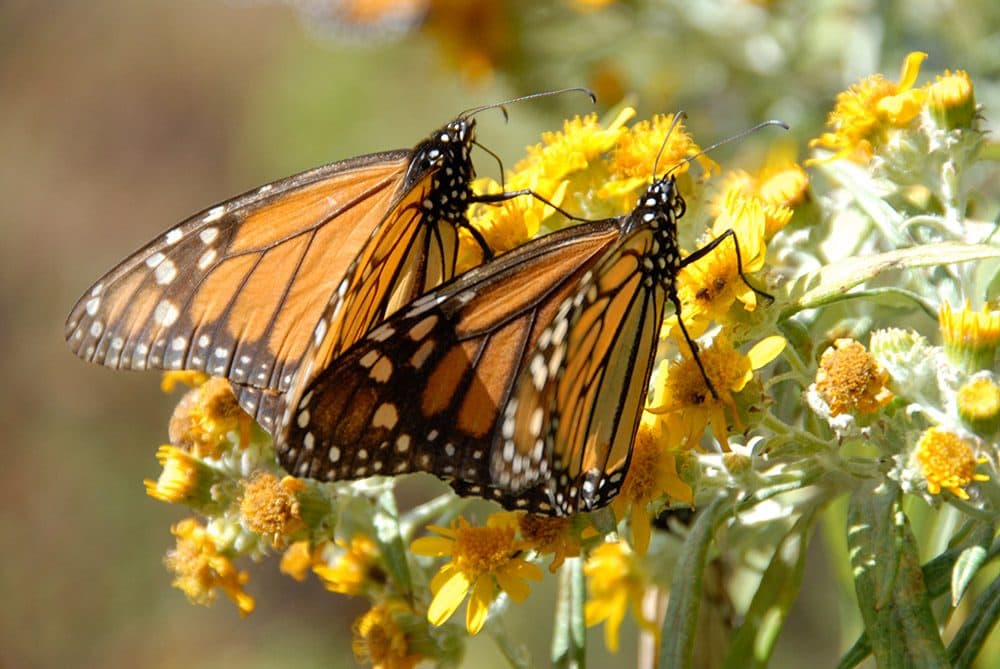Advertisement
Monarch Butterfly Population Continues Alarming Drop

This week, reports out of Mexico, where monarch butterflies make their winter migration from the U.S. and Canada, show that the number of butterflies has dropped for the third year in a row.
Chip Taylor, founder of of Monarch Watch, joins Here & Now's Jeremy Hobson to discuss the reasons behind the drop, including extreme weather conditions in both 2012 and 2013, and the use of herbicides.
Interview Highlights: Chip Taylor
Why the monarchs are disappearing
"Over 30 percent of the monarch habitat has been lost since 2006, and this is due to a couple of things, one of which is the development of Roundup Ready corn and soybeans, which has allowed the farmers to spray glycosphate on those fields to control weeds, because the plants themselves have been genetically engineered to resist that particular herbicide. Well, previous to the use of those types of plants and the glycosphate, the corn and soybean fields used to contain milkweeds — at a small level, but it turned out that a survey done in 2000 showed that that was the most productive habitat for monarch butterflies. Now, it's gone."
The impact of weather on monarch populations
"We've had some unusual events in the last three years. To really be an effective population, to really reproduce well, the butterflies that come out of Texas in May and early June have to arrive at the summer breeding ground site — that's the northern part of the U.S. and southern Canada — at the right time. So there's about a three-day period there, and they have to arrive in the middle of that period, and they have to arrive in good numbers."
"There has never been a March in the history of recorded temperatures in the United States quite like the March of 2012. It was very, very, very hot. And this was followed by a hot spring, and it was followed by an extraordinarily hot summer, so overall, 2012 was a very hot year, and it did not bode well for the butterflies. It really put them down. They spread too far north too soon."
On what would happen if the monarchs vanished
"One of the things I try to tell people is it's not just monarchs. Monarchs are simply a flagship species for everything else that's happening out there. If you look at where monarchs live, they live in habitats that are kind of marginal, but those marginal habitats support most of our pollinators. Those marginal habitats support a lot of small mammals and ground-nesting birds, and if we lose the monarchs, it means we're going to lose all those things. And the one thing people perhaps do not grasp is that it's the pollinators that keep everything knitted together out there. I mean, there's a fabric of life out there maintains these ecosystems, and it's the pollinators that are critical here. They pollinate about 70 percent of that vegetation. If we don't have the pollinators, that means we're going to be losing a lot of plants, then you lose a lot of organisms that are dependent on specific plants and so on and so forth. You know, my plea is that we have to maintain these habitats, not only for monarch butterflies, but for everything else, because it's really in our best interest to do so."
Advertisement
More On Monarch Butterflies
- Majestic Monarch Butterflies Under Threat (Interview about last year's migration)
- The Epic Journey Of Monarch Butterflies (Interview about the documentary)
- Barbara Kingsolver On ‘Flight Behavior’ (Interview about a novel involving monarchs)
Guest
- Chip Taylor, founder of Monarch Watch. The organization tweets @monarchwatch.
This segment aired on January 31, 2014.